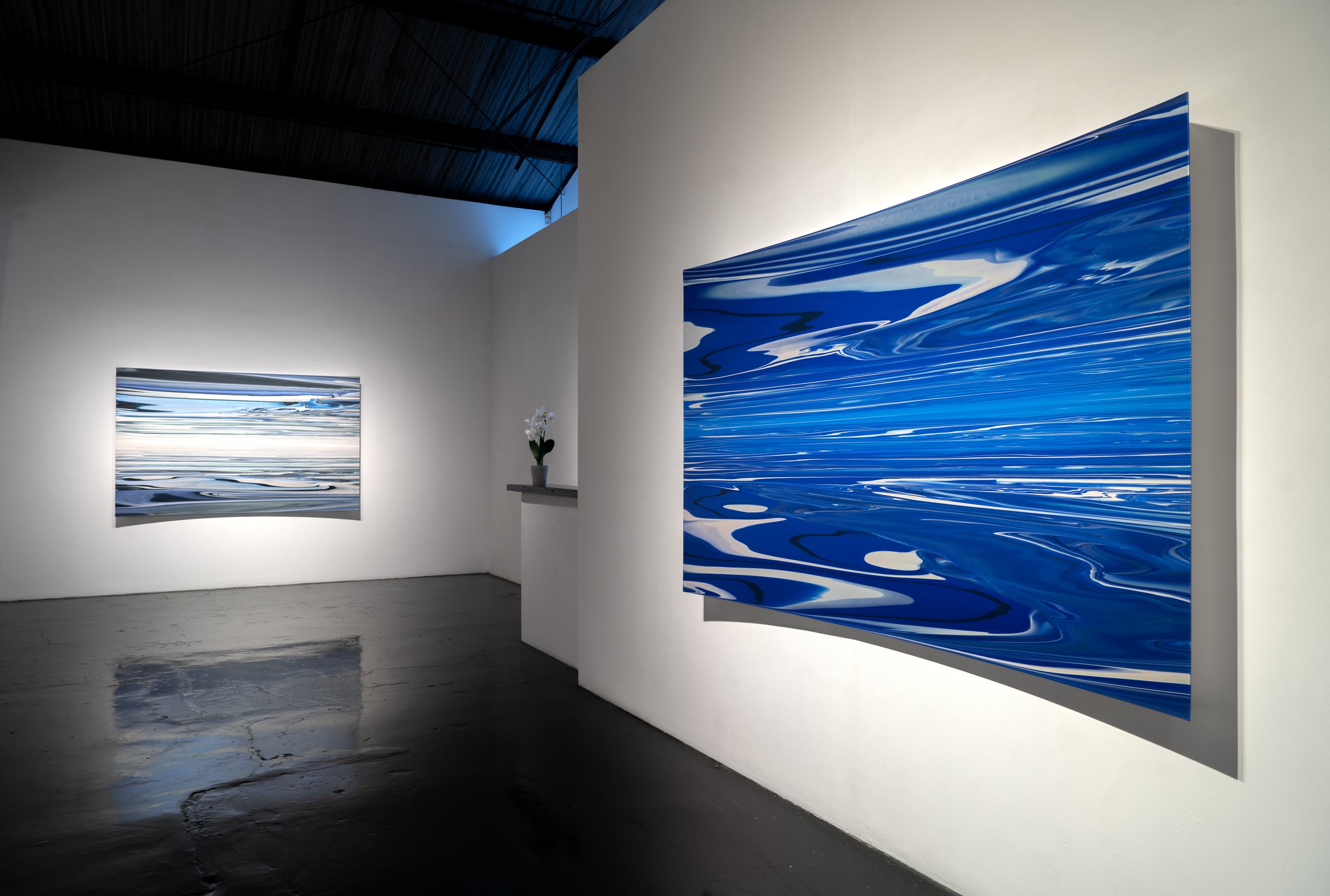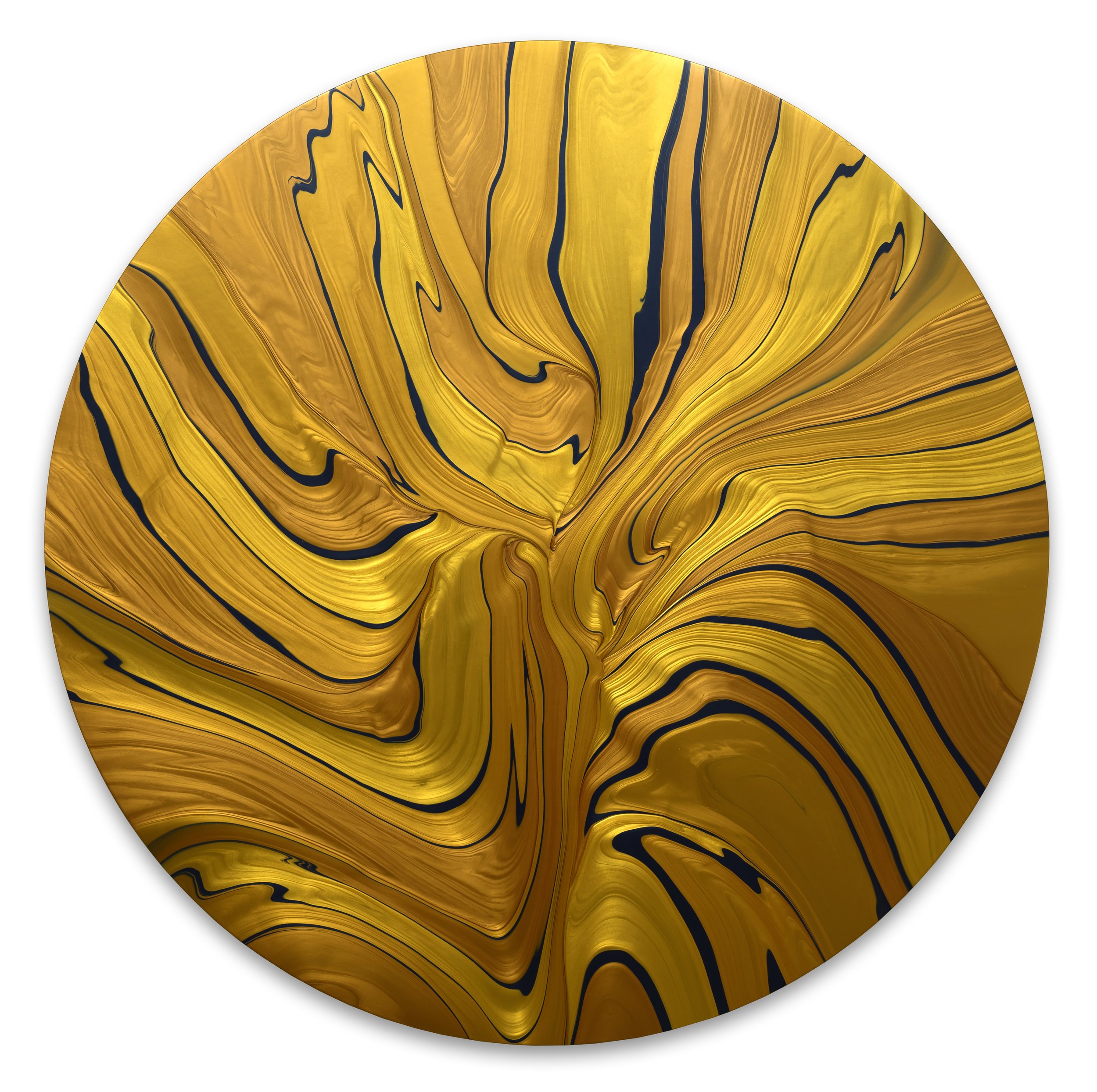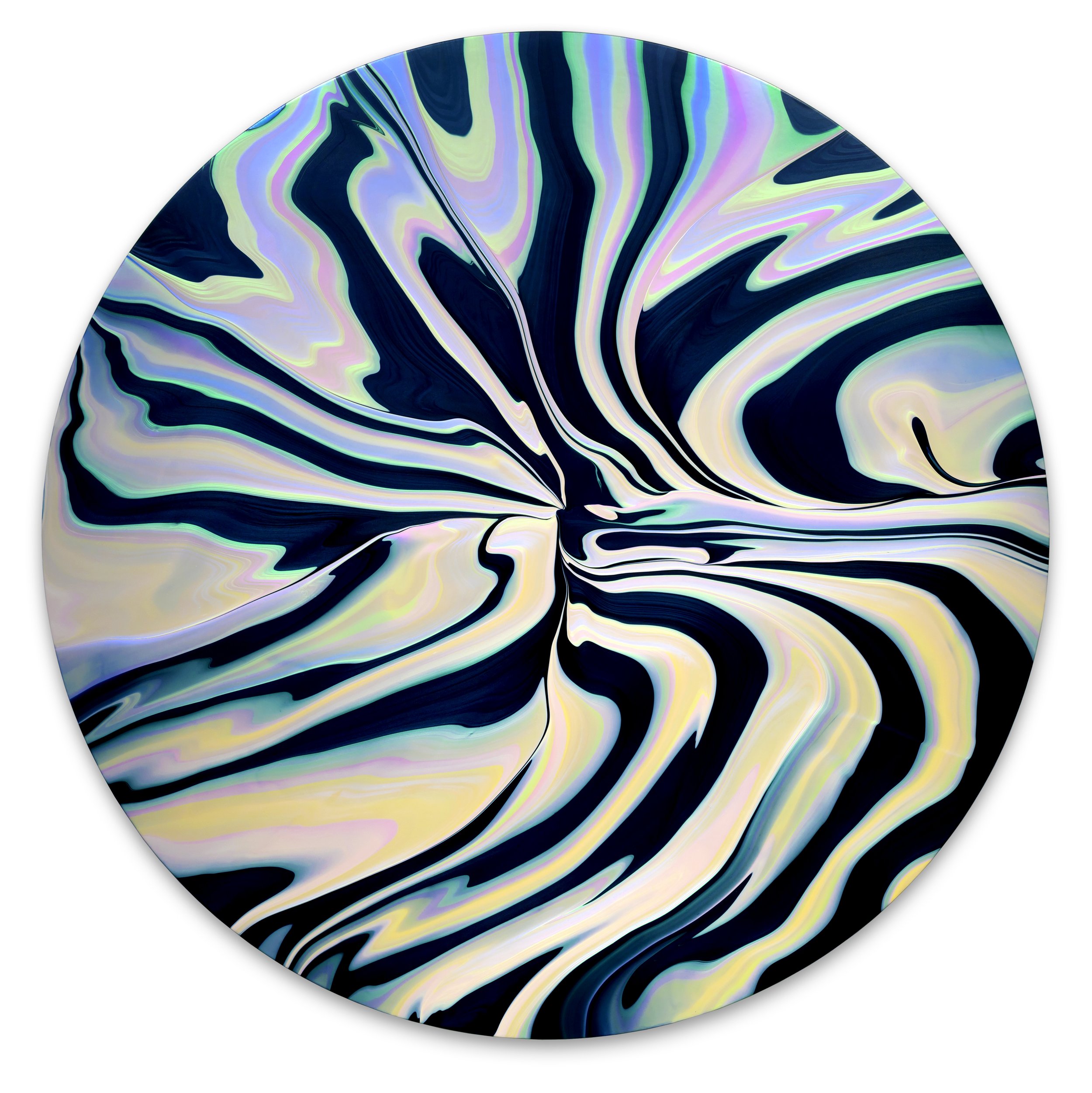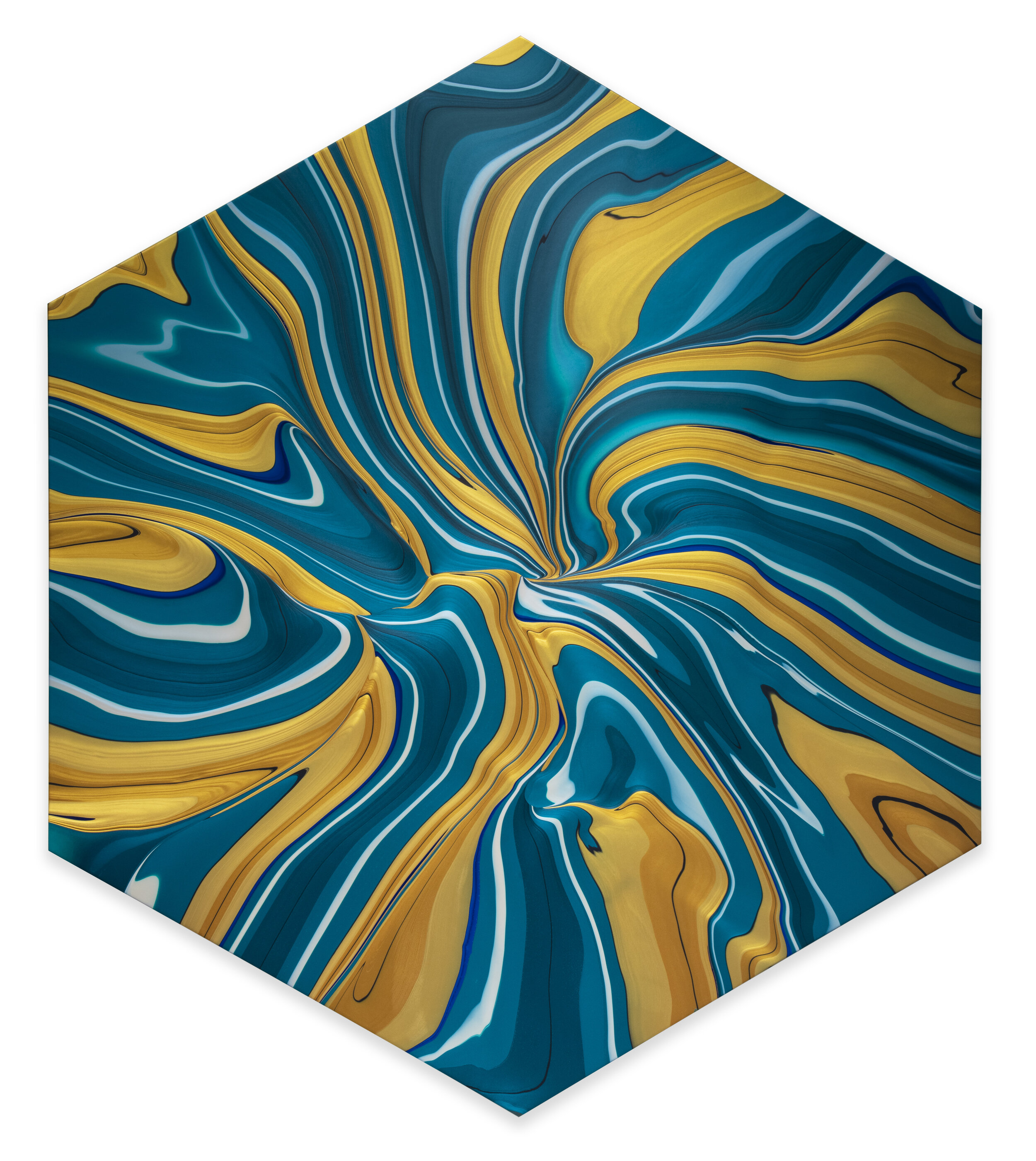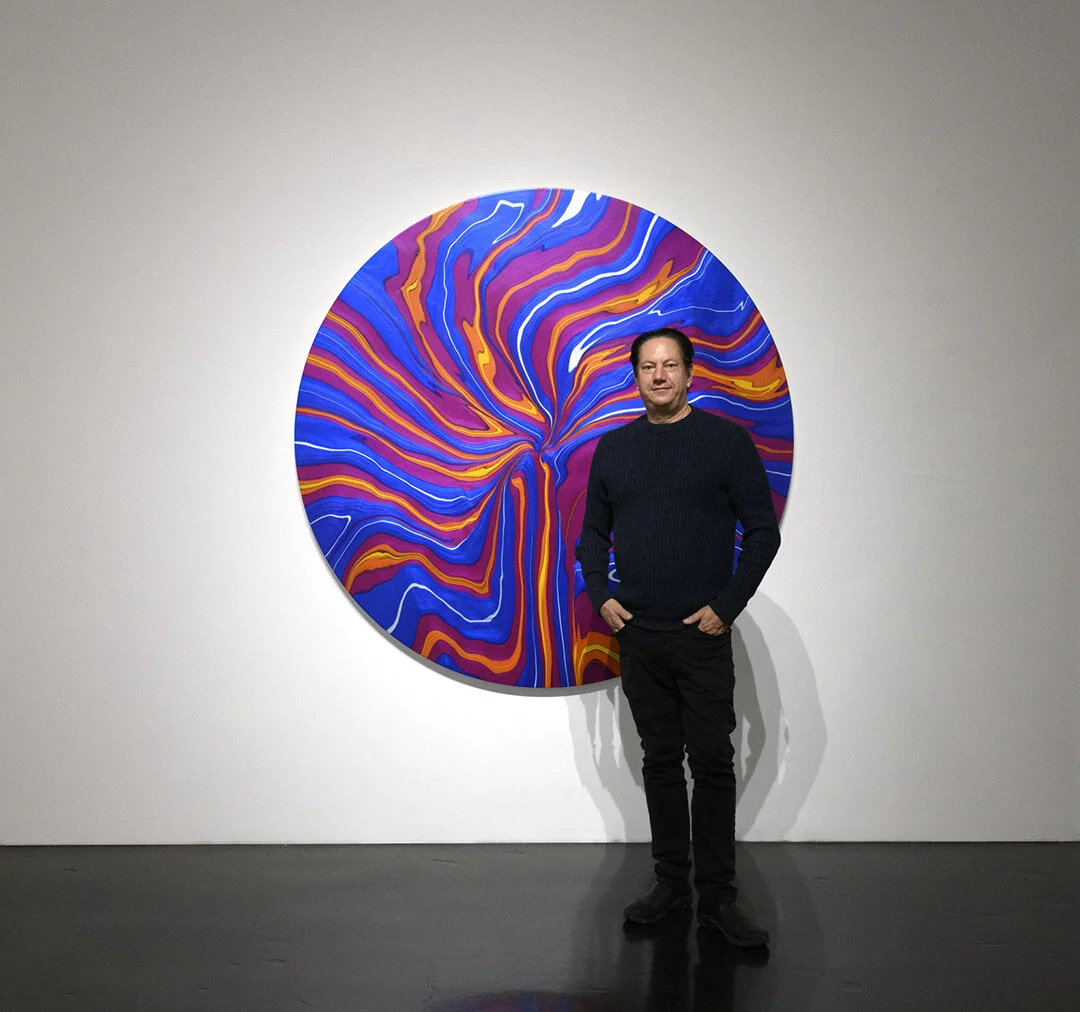Scot Heywood Exhibition
/SCOT HEYWOOD
Born in Los Angeles in 1951, Scot Heywood has been investigating geometric abstraction for over forty years. “I painted flat from the get-go,” Heywood says, who has explored abstraction throughout the course of his artistic career. A self-taught artist, Heywood’s works are indebted to the origins of geometric abstraction. In the late 1970s, Heywood fell in love with the paintings of Piet Mondrian and John McLaughlin; since then, he has been translating the austere philosophy of geometric abstraction into his own monochromatic works.
Ranging in scale from intimate to encompassing, his paintings consist of multiple, colored canvases, connected in staggered, patchwork patterns. In a seemingly endless array of variations, he inserts thin strips between, or attaches them to the sides of, square and rectangular canvases, intentionally misaligning them to create delightfully disruptive, staccato visual rhythms. Heywood is interested in the relationship between wall, work, and viewer, and in the rich dialogue between color and form.
Heywood has shown extensively in Southern California since the late 1970’s at such as significant galleries as Patricia Faure Gallery, Frank Lloyd Gallery, ACE Contemporary Exhibitions and Subliminal Projects Gallery. His work has been featured in dozens of solo shows, and is often included in significant group exhibitions at The Los Angeles Institute of Contemporary Art, San Francisco Art Institute and Otis College of Art & Design. Heywood’s work has been featured in publications such as the Los Angeles Times, Art in America, Art Slant, LA Weekly and Artweek. His paintings are also represented in numerous public and private collections, including the Frederick Weisman Foundation. He currently lives and works in Los Angeles, California.








